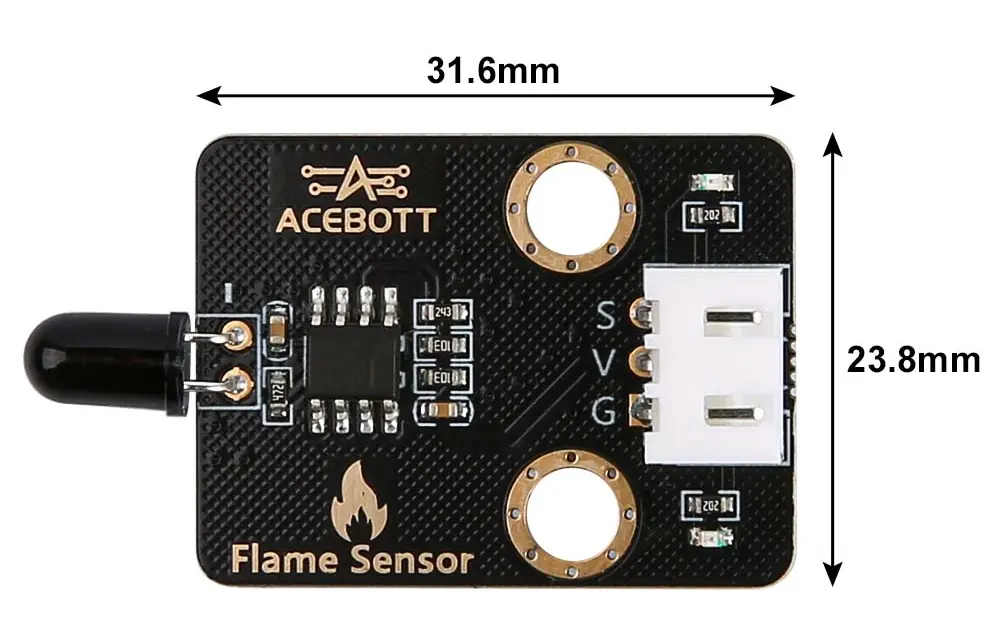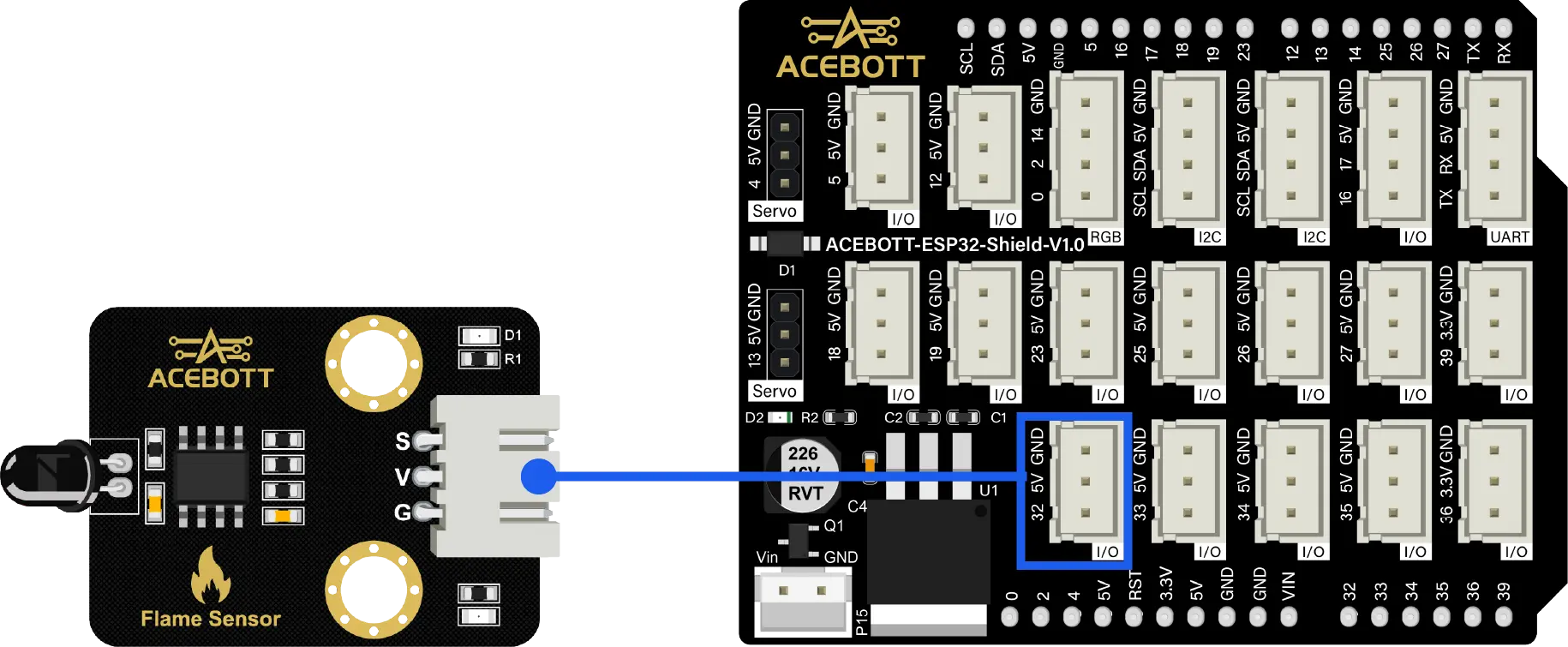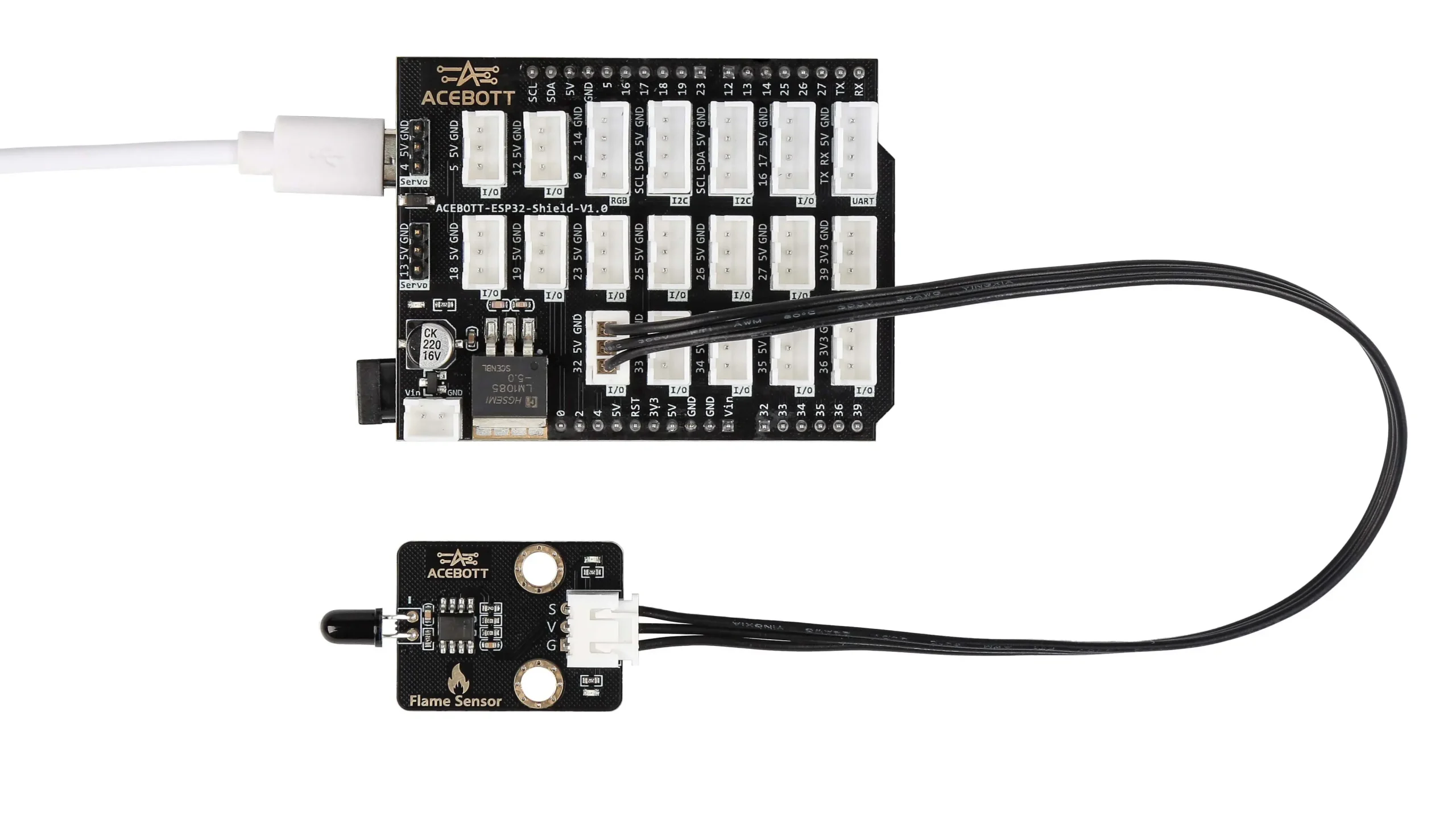Product Introduction #

The flame sensor can detect light sources with wavelengths ranging from 760 nm to 1100 nm to detect fire sources or other radiation sources. Its working principle is based on the flame in the combustion process, will emit a specific frequency of infrared radiation and visible light, using a special infrared receiver tube to capture the infrared wavelength in the flame to detect the existence of flame.
Application reference: fire extinguishing robot, flame alarm, etc.
Parameter Specification #
| Parameters | Value/Description |
| Operating voltage | 3.3~5V |
| Operating temperature | -10°C~+60°C |
| Wavelength | 760nm~1100nm |
| Default output level | High level |
| Output signal | Digital signal |
| Size | 3.16cm*2.38cm |

#
Wiring Diagram #
Note:Expansion board is attached to esp32 controller board.

| Flame Sensor | ESP32 |
| VCC | 5V |
| GND | GND |
| Sign | Pin 32 |
Sample Code #
void setup() {
pinMode(32,INPUT);//Set pin 32 to input mode
Serial.begin(115200);//Set baud rate to 115200
}
void loop() {
Serial.println(digitalRead(32));//Read the state of pin 32 and print it to the serial monitor
delay(1000);
}
Note: If you are using an Arduino board, then change the pin in the program to PIN7, set the baud rate to 9600, and then connect the hardware pin to PIN7 and upload the program.
Test Results #
After uploading the code to the controller board, open the serial port monitor of the Arduino IDE, set the baud rate to 115200, and switch to the scroll mode.
When there is a flame in front of the flame sensor, the sensor returns data 1; When there is no flame in front of the flame sensor, the sensor returns the data 0.


Related Resources #
Get One Now #
B2B Business: info@acebott.com




